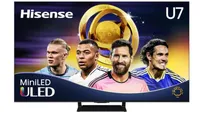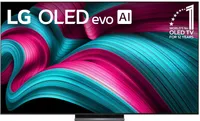TV buying season is here — 4 hidden TV specs that actually matter this Black Friday
Find a TV that suits your needs and Black Friday budget
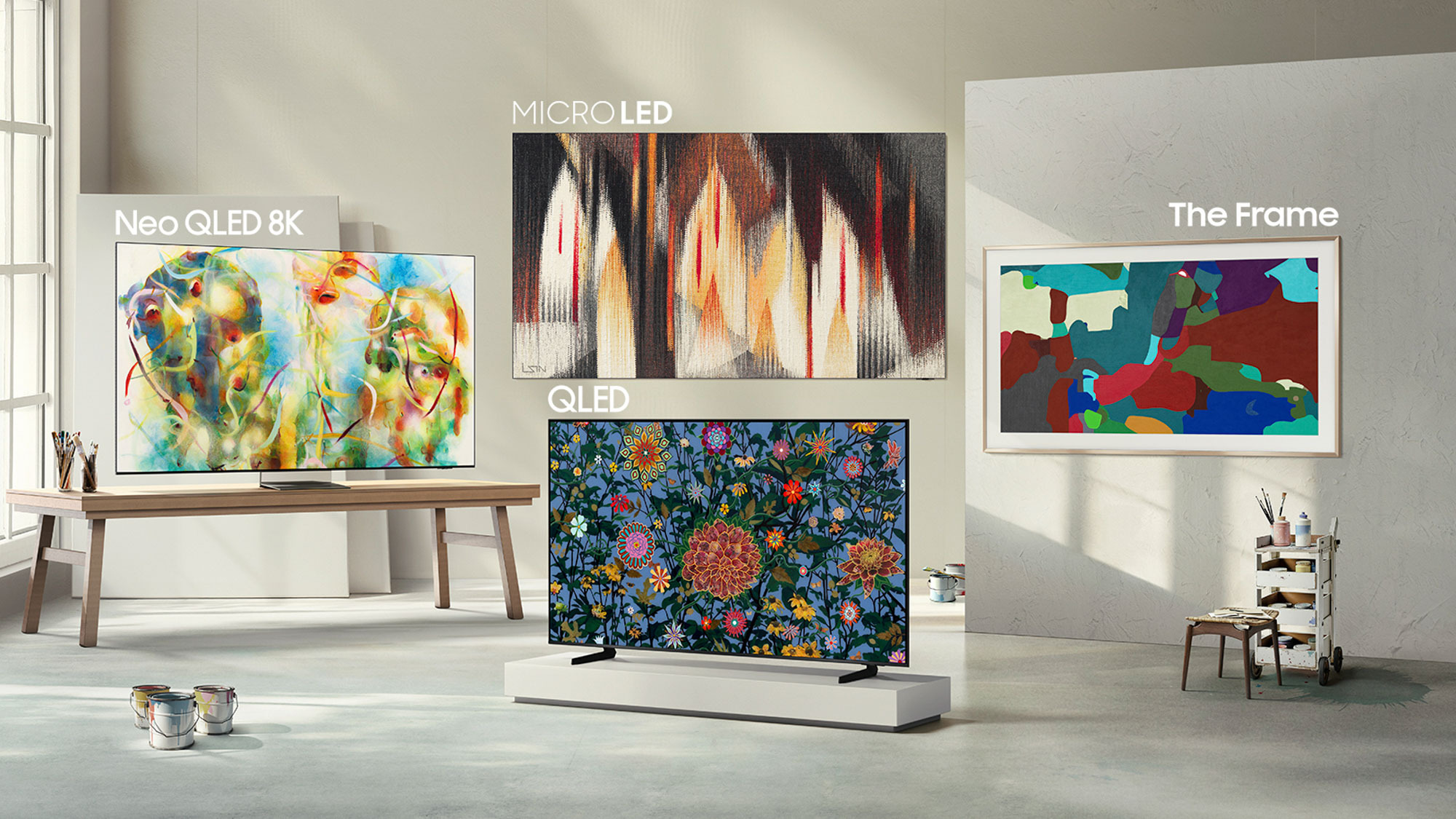
The craziness of Black Friday is here, and now's your cue to start paying attention to some of the door-busting TV deals from retailers like Best Buy, Amazon and Walmart. Unfortunately, the multitude of specs and jargon being tossed around, along with the many discounted TVs flooding your timeline, might leave your head spinning.
Despite being just screens for entertainment, TVs often pack tons of features and specifications that can drive up the price. Several of these specs can also be hidden or minimally advertised, making it hard to know which are as important and worth the additional premium.
Having a deeper understanding of which TV specs are worthwhile can not only help you pick the right set for your living room, but it can also steer you towards a more affordable screen that doesn't have all the extra bells and whistles you don't need. To help, I've put together a list of notable TV features and specs to know as we head into the holiday sales rush.
1. Resolution
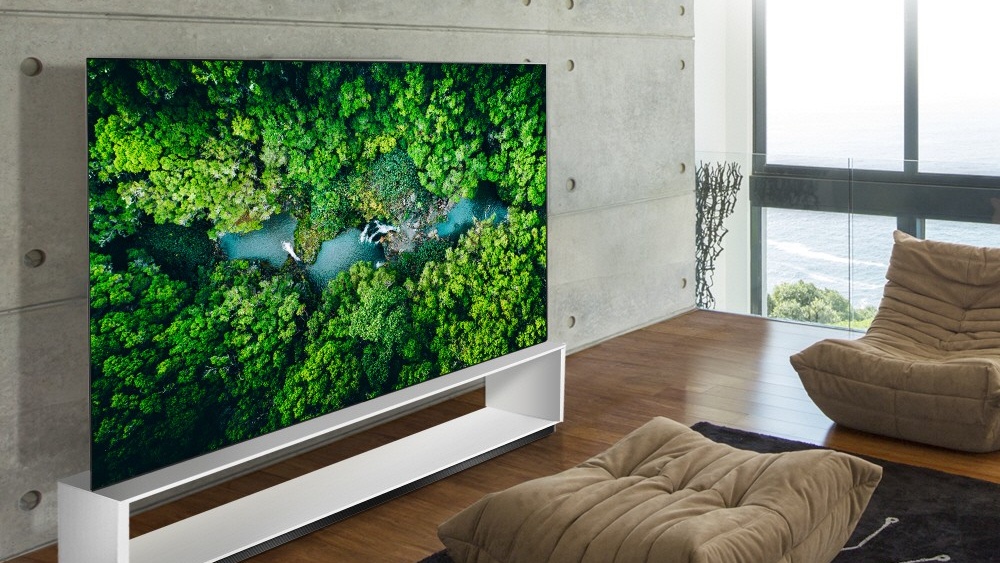
It's safe to say the TV resolution is the most heavily advertised and least-hidden feature on a specs list. However, once you start diving into budget picks, like some of the best TVs under $500, you'll notice the TV's resolution isn't often front and center.
This is why I'm still highlighting resolution here, because you'll ideally want to focus on 4K TVs for the best picture quality and performance. Most models today are primarily 4K (Ultra HD), but some TV makers offer 1080p sets (often labeled "HD"). As of 2025, Samsung is the only display maker that still offers 8K TVs.
While you might think buying an 8K TV could equate to getting the most feature-rich, spec-heavy set in the market, that's not entirely accurate. Most 8K sets are designed as Mini-LED TVs, which decreases costs. There are 8K OLED TVs for sale, like the LG Z3 OLED, but that TV costs over $5,000 and is two years old.
The Vizio VFD40M-08 is a stellar deal if you're looking for a 1080p smart TV. With access to Vizio SmartCast, you get tons of free content and access to all the best streaming services. The VFD40M-08 also has access to HDR10 for enhanced visuals, plus DTS Virtual: X for cinematic audio coverage.
Make sure, when buying a new TV, that it's built on a resolution that meets your needs. If you don't require 4K picture quality, a 1080p model can be worth the discounted price.
Simply put, don't fall for the 8K hype. Make sure, when buying a new TV, that it's built on a resolution that meets your needs. If you don't require 4K picture quality, a 1080p model can be worth the discounted price.
Get instant access to breaking news, the hottest reviews, great deals and helpful tips.
But 4K resolution is the best choice for most buyers, so you'll want to focus primarily on buying a TV with this specification for optimal performance.
2. Panel type
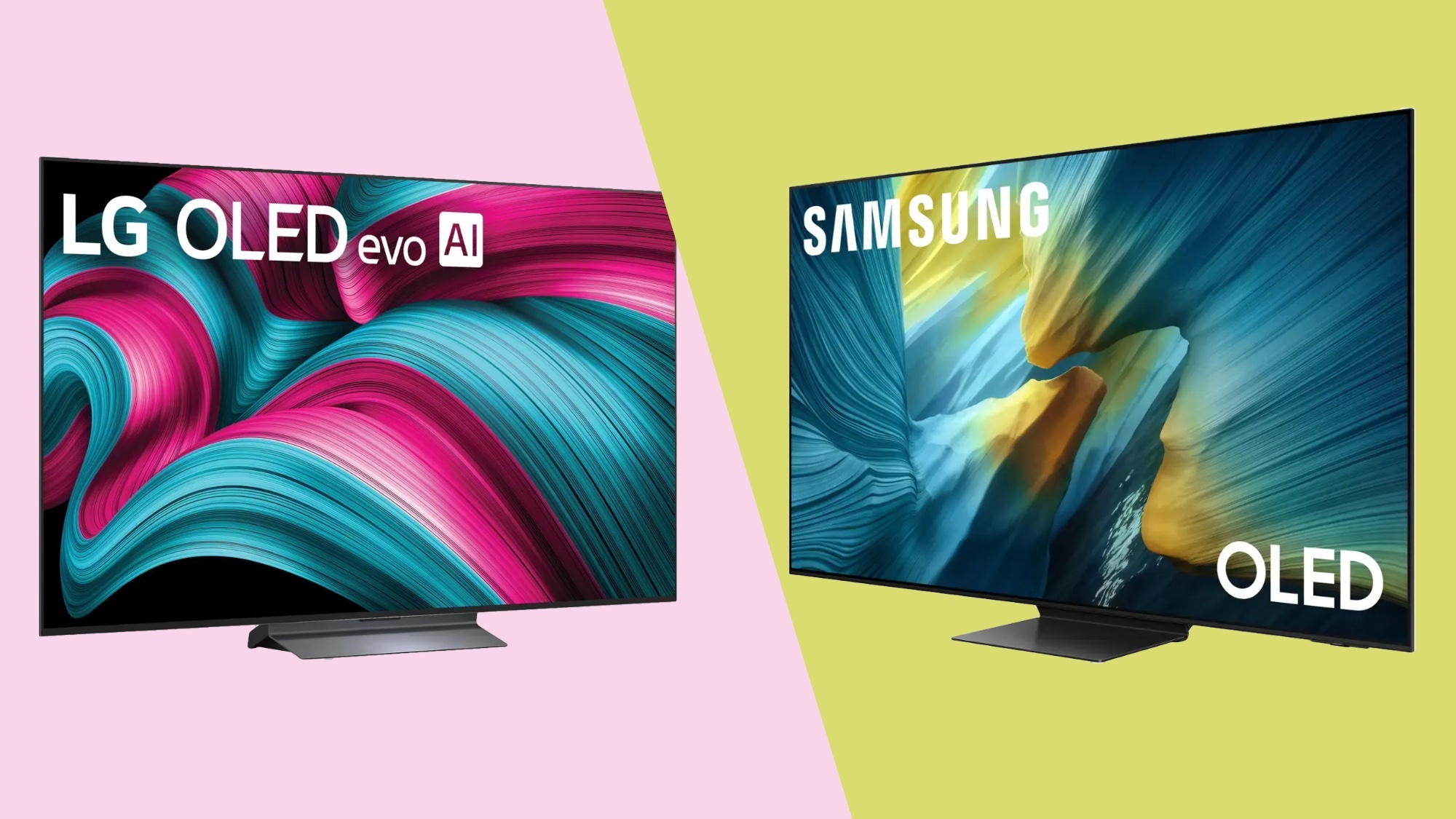
Chances are, you don't know what panel type your TV uses. TVs can offer very different performance depending on the panel type, OLED or LCD. Variations in the panel can equate to better color, higher brightness, richer blacks, and even improved anti-glare performance, among other differences.
For instance, three of our picks among the best OLED TVs use a WOLED panel (the LG C5 pictured on the left above, for example) and two use QD-OLED panels (like the Samsung S95F pictured above on the right). WOLED panels usually have better brightness and anti-glare performance, while QD-OLEDs perform better in color accuracy and volume.
If you're looking to buy an OLED TV this Black Friday, knowing the difference between these two panel types is crucial. WOLED TVs are typically more affordable than QD-OLED TVs, so these will often offer you the best bang for your buck. My personal recommendation? It's really no contest; the LG C5 OLED is not only value-oriented in its specs and pricing, but it's also one of the only TVs we rated all year with a perfect score.

There are also several different panel types across LCD TVs, but the most common are Vertical Alignment (VA) and In-Plane Switching (IPS). IPS panels offer better viewing angles and color accuracy, while VA panels offer better contrast control.
Almost all Mini-LED TVs we recommend in our Black Friday roundups use VA panels. In particular, TCL makes its own proprietary VA panels, called HVA and WHVA, which are found in its 2025 TVs. Meanwhile, Hisense Mini-LED TVs likewise offer mostly VA panels, but some are built with special IPS panels (called ADS Pro) in different sizes.
TVs that use the ADS Pro panel type include the Hisense U8QG and Hisense U75QG Mini-LED TVs. Both sets use an IPS panel in the 75-inch configuration, and the Hisense U8QG even has one in its 55-inch size. Depending on your setup, these variants could be a nice alternative, especially if you're looking to get a great deal on a big-screen TV. A major downside to the U8QG and U75QG is their viewing angles, so an IPS panel in the larger configuration could be beneficial.
Panel type is one of the least-discussed features of TVs, so it's important to look out for this particular spec when searching for an upgrade. The last thing you want is a TV with poor anti-glare performance when you're primarily watching in a sun-lit or ambient-lit room.
3. Backlighting
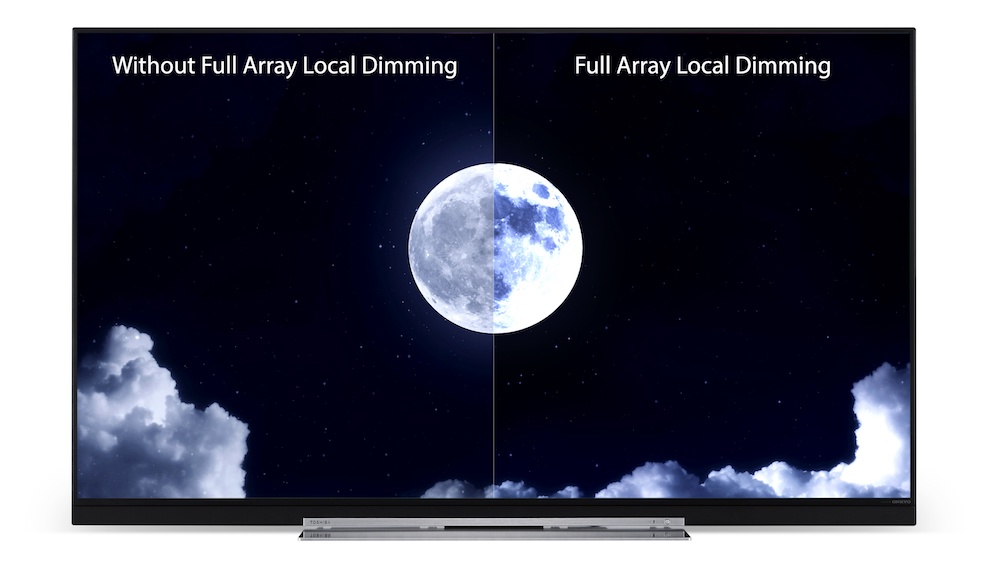
Another key difference among LCD TVs, particularly Mini-LED sets, is backlighting. There are three main backlighting types you should know: edge-lit, direct-lit, and full-array. Each option has its own pros and cons; however, we recommend avoiding edge-lit displays, as they don't always feature the best performance.
The same can be true for some direct-lit TVs. While direct-lit TVs are often cheaper, such as the Samsung U7900, LG UA7000, and Roku Select, direct-lit backlighting is also available on premium sets, including the Samsung QN80F.
When it comes to the Mini-LED TVs we recommend, most will feature full-array local dimming (FALD). These include the Sony Bravia 7, TCL QM8K, Roku Pro Series, and Hisense U75QG, to name just a few. TVs featuring FALD backlighting tend to offer far better brightness control, improved contrast, and deeper blacks, making them the preferred pick when looking for a new Mini-LED TV.
The Hisense U75QG is a mid-range Mini-LED TV with a healthy dose of specs and features to meet most entertainment needs. It supports both Dolby Vision and HDR10+, is equipped with four HDMI 2.1 ports, and uses a VA panel with FALD backlighting. To make things even sweeter, it costs far less than most high-end TVs this year.
4. HDMI ports (and input latency)

Most conventional TVs these days are equipped with either HDMI 2.0 or HDMI 2.1 ports. On average, you'll see two of each, but the best gaming TVs typically have four HDMI 2.1 ports for the broadest range of coverage, and these are the models we recommend above all else (for the most part).
HDMI 2.1 offers a variety of benefits, like 48Gbps of bandwidth, Dynamic HDR, Variable Refresh Rate (VRR), Auto Low Latency Mode (ALLM), and Quick Media Switching (QMS). The key feature to know is that HDMI 2.1 allows modern consoles to play at 4K/120Hz, but various other factors make it worthwhile.
One example is eARC (Enhanced Audio Return Channel), which can be used with soundbars and other audio equipment, such as AV receivers. Using the eARC port with one of the best soundbars is the surest way to enhance your TV audio, but it could leave you with one extra HDMI 2.1 port for enhanced gaming if your TV only has two.
This is why a TV with four HDMI 2.1 ports is highly recommended. But the other thing to consider is a TV's input latency. If you want the best possible gaming performance, especially for fast-paced FPS titles like Black Ops 7 and Battlefield 6, you'll want a TV with latency under 10ms.
The LG C5 OLED is one of our favorite value TVs and a brilliant OLED for those looking to save a little money without giving up too much. It features gaming capabilities, including a 144Hz refresh rate and four total HDMI 2.1 ports. LG's webOS platform also offers a variety of free channels to explore, as well as cloud gaming services.
42" for $896
48" for $949
55" for $1,196
77" for $1,196
83" for $3,196
The LG C5 OLED ticks both boxes. It's equipped with four HDMI 2.1 ports and also has an input latency of 9.1ms in Boost mode. Other notable models include the Samsung S90F OLED, Hisense U75QG, and Samsung QN80F.
Earlier this year, the HDMI forum announced the arrival of HDMI 2.2. The major benefit of the new spec is 96Gbps of bandwidth, which is double that of HDMI 2.1. So far, HDMI 2.2 has not been added to any 2025 models, but it could arrive on next year's sets. Only time will tell.
4. HDR support

There are three main HDR formats to consider when buying a new TV: HDR10, HDR10+, and Dolby Vision. Most TVs offer the full gamut of HDR formats. However, LG TVs are equipped with Dolby Vision, while Samsung TVs use HDR10+, dropping the other format.
As the name suggests, HDR10+ is superior to HDR10, primarily because it uses dynamic metadata to more accurately optimize the on-screen image frame-by-frame. This leads to more realistic details and generally better image quality in content mastered in the format.
Meanwhile, Dolby Vision is often considered the best format bar none. It's equipped with more precise metadata per frame and offers up to 10,000 nits of brightness, even though most TVs can barely top 4,000 nits. Dolby Vision also uses 12-bit color depth, whereas HDR10+ is stuck with 10-bit color.
The Z95A is Panasonic's premium OLED TV. In our Panasonic Z95 OLED TV review, we called the Editor's Choice TV an absolute beast, boasting some of the most advanced features of any TV currently available. It's built on LG Display's second-gen MLA panel, which ensures it has a vast and vibrant brightness potential. It also comes equipped with a 144Hz refresh rate and a range of gaming features, including HDMI 2.1, VRR, AMD FreeSync Premium, and NVIDIA G-Sync support. It also supports all HDR formats and comes with hands-free Alexa compatibility.
You'll also see far less content mastered in HDR10+, because it's royalty-free and open-source, whereas Dolby Vision has long been considered the standard. While more streaming services are beginning to support HDR10+ (including Disney Plus and Hulu), it's not as widely available as Dolby Vision.
Despite Dolby Vision clearly being the winner in this foray, you'll still want both formats on your TV to get the best of both worlds. Several sets I've already mentioned above support both formats, like the Hisense U75QG and the Sony Bravia 7. One set I recommend if you're looking for a premium OLED is the Panasonic Z95A. It's equipped with both HDR10+ and Dolby Vision, plus it has one of the best TV speaker systems.
Next-generation HDR formats were announced earlier this year, including Dolby Vision 2 and HDR10+ Advanced. While these two formats should offer improved performance, they won't become available on TVs until next year at the earliest.
Now that you know the difference between the HDR formats, resolutions and panel types, you can now shop Black Friday TV deals with confidence.

Follow Tom's Guide on Google News and add us as a preferred source to get our up-to-date news, analysis, and reviews in your feeds.
More from Tom's Guide

Ryan Epps is a Staff Writer under the TV/AV section at Tom's Guide focusing on TVs and projectors. When not researching PHOLEDs and writing about the next major innovation in the projector space, he's consuming random anime from the 90's, playing Dark Souls 3 again, or reading yet another Haruki Murakami novel.
You must confirm your public display name before commenting
Please logout and then login again, you will then be prompted to enter your display name.

